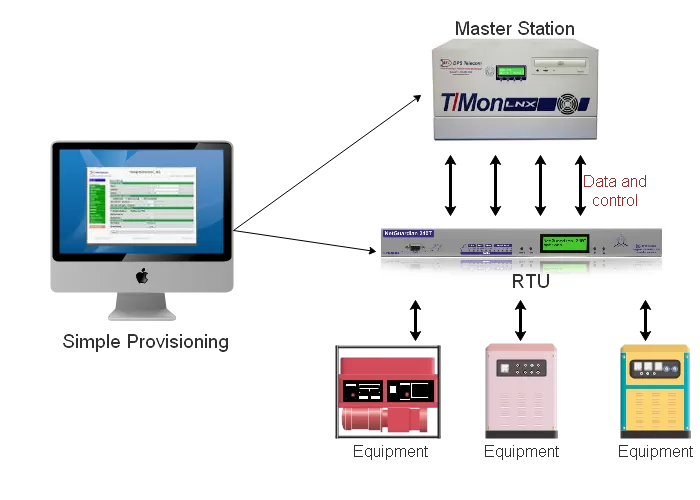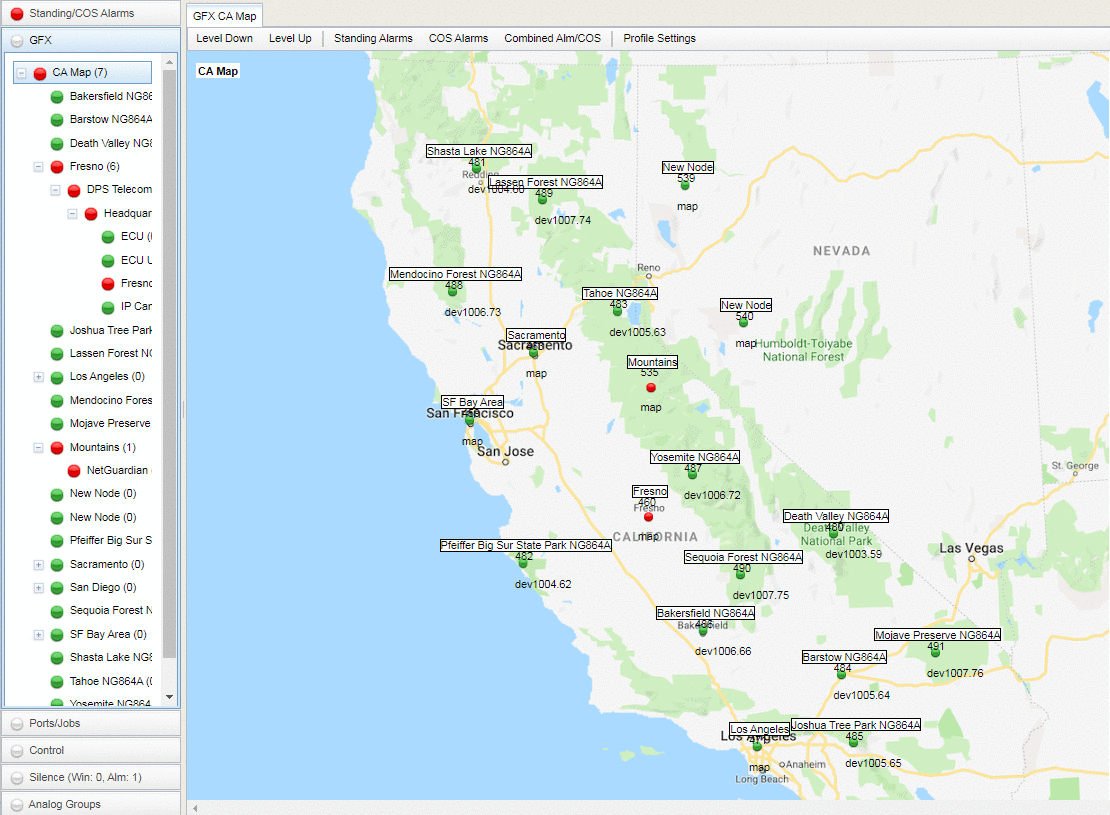Check out our White Paper Series!
A complete library of helpful advice and survival guides for every aspect of system monitoring and control.
1-800-693-0351
Have a specific question? Ask our team of expert engineers and get a specific answer!
Sign up for the next DPS Factory Training!

Whether you're new to our equipment or you've used it for years, DPS factory training is the best way to get more from your monitoring.
Reserve Your Seat TodayElectric utility companies have to meet the increasing demand for reliable power distribution while also dealing with possible network outages and clients' complaints. This means that, more than ever, utilities are challenged to do more with less to maintain (and improve) the efficiency of their power generation and distribution networks.
The good news is that many areas of your existing electrical distribution network can be improved with an efficient remote monitoring and control system. In fact, monitoring systems are one of the most cost-effective solutions for improving reliability while enhancing network performance and cutting costs.
As an experienced remote monitoring solutions manufacturer, many electric companies reach out to us for a way to automate and optimize their network. We've helped multiple clients to reach their goals, and we know that having visibility over your electric distribution system is a must.
So, let's take a look at how remote monitoring systems can help optimize your electrical distribution network.

A remote monitoring system for a power distribution network usually involves a combination of hardware and software. The information is gathered from your electrical distribution system, usually from sensors located at substations. Depending on the size and complexity of the substation, it will have a large number of sensors collecting data.
In a typical remote monitoring system, a substation is monitored and managed in real-time by a Remote Terminal Unit (RTU). One or more RTUs are located at the substation to collect data from sensors, and transmit all the information gathered to a central master station.
The master station will provide you with an interface to manage all the equipment in your substations as well as processes, environmental level, and anything else you're monitoring. This means that the master is a central location that will integrate all your network, so you won't have to try to work with multiple different interfaces.
On top of merging all your monitoring information in only one web interface, your master station is also responsible for allowing you to remote control your remote devices and processes. Depending on the circumstances, these commands can be automatic and allow you to have full remote control over your sites.
For example, when you get an alarm notification, you can access your master and issue commands to your RTU's control relay in order to have the alarm condition corrected. This can be turning on a generator, turning off devices, etc.
Many utility companies still monitor their electrical distribution processes manually - tasks that could be easily automated with a remote monitoring system. Having this system in place means that you won't have to delegate the responsibility of collecting information and manual monitoring to your techs.
They won't have to drive to your substations all the time just to keep an eye on what's going on, which will save you money and they will be able to work on more important tasks. This can also improve the safety of your workers since they won't need to go to remote sites during outages. And eliminates the potential for human error when recording data and trying to detect and solve issues.
If your main concern is reliability, modern monitoring systems have built-in redundancy and backup systems that can give you trustworthiness and are faster and more consistent than manual monitoring.
Remote monitoring systems can do more than just gather information though. They can also issue automated control commands that benefit utility companies significantly. When alarms are triggered and sent to you as notifications, you can remotely dispatch control commands that will allow you to correct any issues, make adjustments and corrections. Being able to remotely control your network often prevents outages.
In a situation when an outage does happen due to uncontrollable conditions, such as a storm, your remote monitoring system will help your techs to identify the exact location of the outage and the impacted areas in a timely manner. You won't have to find out that a problem is going on through customer calling to complain.
Furthermore, a monitoring system allows you to restore your network in a timely manner after an outage. Remote controls can help you turn on generators, turn on switches, etc.
This means that, depending on the extent of the issue, you won't even have to send a technician in costly trucks rolls to your remote sites to visually inspect the equipment and make a guess about what is going on.
Much of the data needed to effectively monitor and control a power distribution system is found at substations, but collecting these data can be challenging.
As we've talked about, remote monitoring and control systems offer many advantages, such as increased reliability, reduced operational costs, improved worker safety, greater customer satisfaction, etc. When you have real-time visibility over your remote operations you can prevent small issues from becoming big, serious problems. And you can also restore your network in a timely manner after an outage.
However, all of these benefits are only available to you if your monitoring system features an intuitive, graphical interface. Different monitoring systems can give you many different ways to visualize real-time data. But the best way to optimize your power distribution network is to have an intuitive interface displaying dynamic dashboards with maps of your network that can be zoomed in until you reach pictures of your equipment.
This is going to be really important when an alarm happens and you need to know at which site the problem is happening and with which device.
A user-friendly master station interface is critical. This is the main tool you'll have to make informed decisions, so you need to have access to meaningful information.

Remote monitoring and control in real-time allows you to make informed decisions in a timely manner. But, if you want to uncover recurring problems and address issues before they occur, you need to perform trend analysis.
Most monitoring systems store data from past events, which allows you to analyze trends and historical data. Trend analysis facilitates comparisons among various operating situations. For example, excess capacity can be spotted more easily, so power can be rerouted from areas approaching overload.
Analyzing trends and historical data also helps maintain desired power factors, voltage levels, and other distribution system parameters within desired thresholds.
Depending on your monitoring system, you'll have your historical data displayed in different ways, but having it as a graph simplifies analysis. This is because graphs make issues stand out in a visual way, making it easier for you to pinpoint problem areas.
When you use trend analysis features, your remote monitoring system becomes an important tool not only for daily operations but also for proactive maintenance and strategic decisions.
Modern monitoring systems bring many advantages in a cost-effective way, but there are some key points that you need to keep in mind.
Implementing a remote monitoring system for your electric distribution network will bring you many benefits. Some of them are:
Most companies find that the advantages of having a remote monitoring system to safeguard their electrical distribution network justify the initial investment. If that's your case as well, reach out to us. We are specialized in custom monitoring systems, so it doesn't matter what you need, you have a solution for you.

Morgana Siggins
Morgana Siggins is a marketing writer, content creator, and documentation specialist at DPS Telecom. She has created over 200 blog articles and videos sharing her years of experience in the remote monitoring industry.